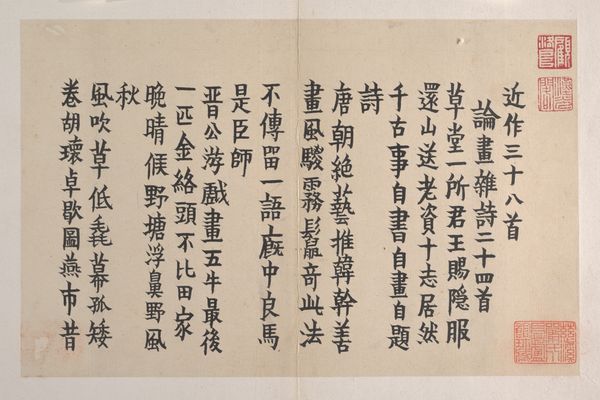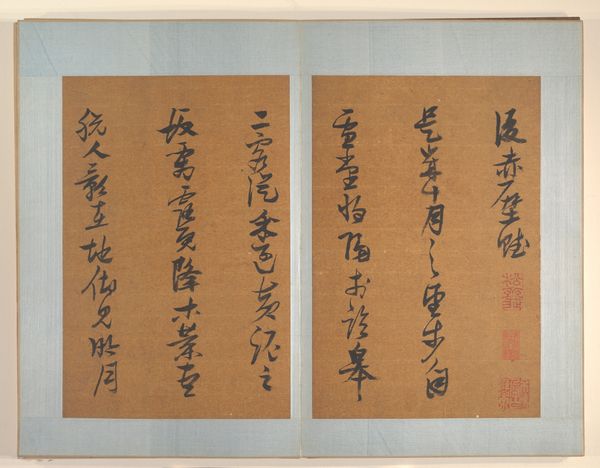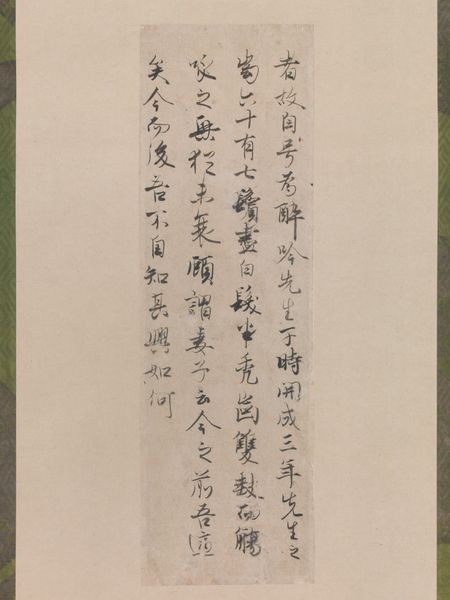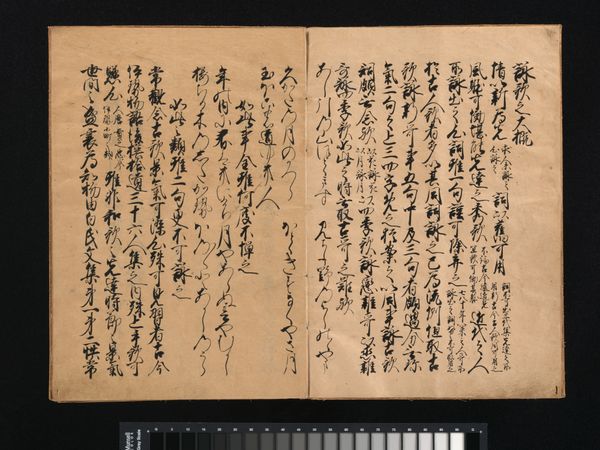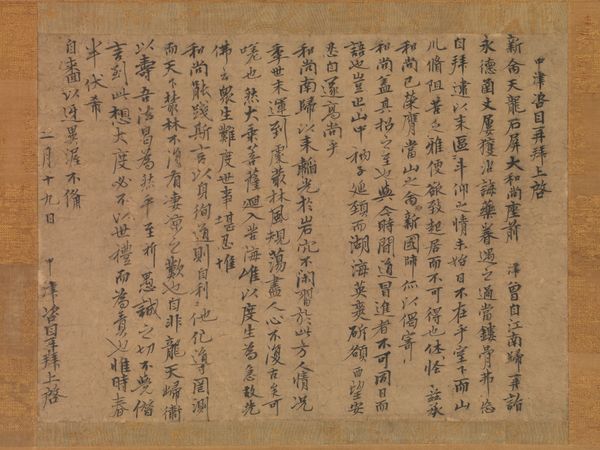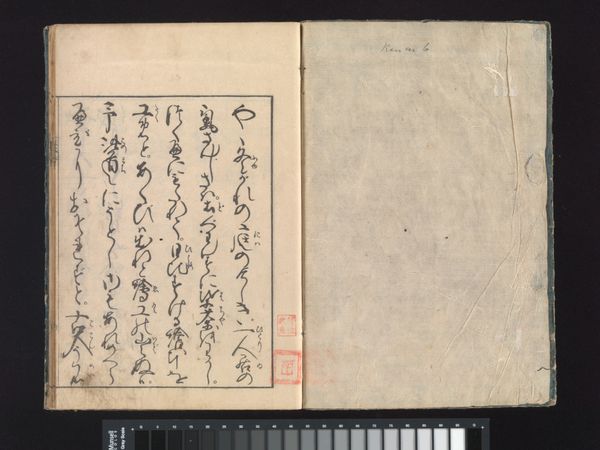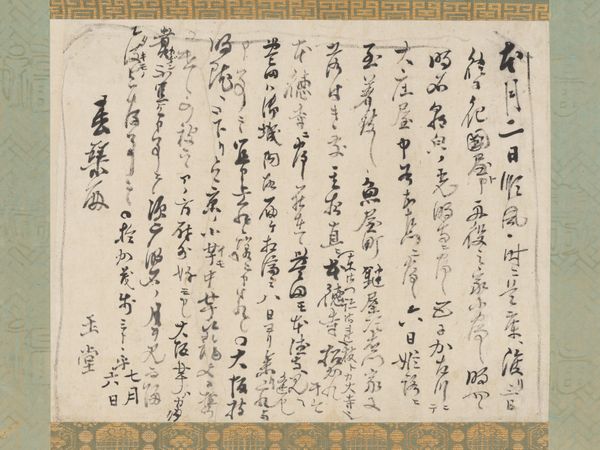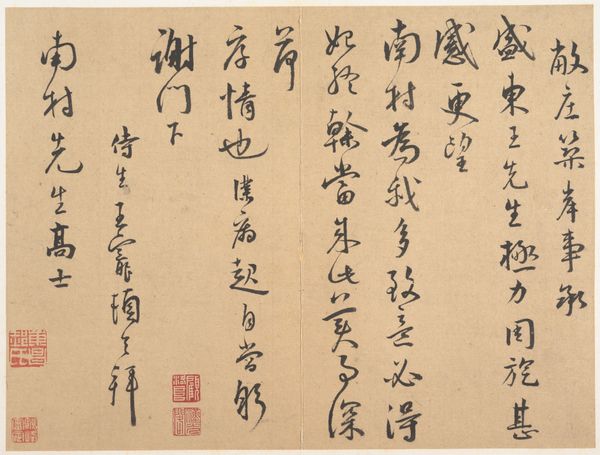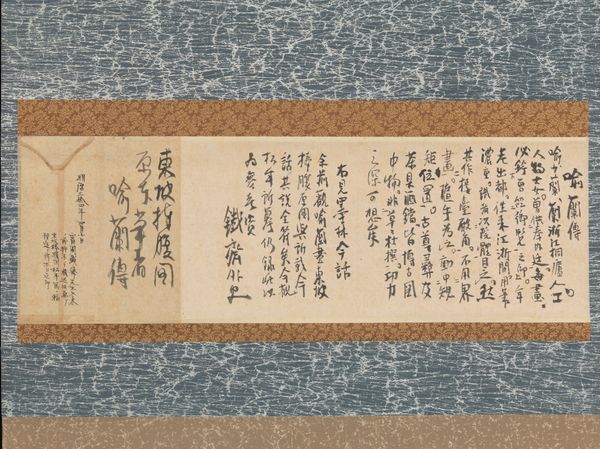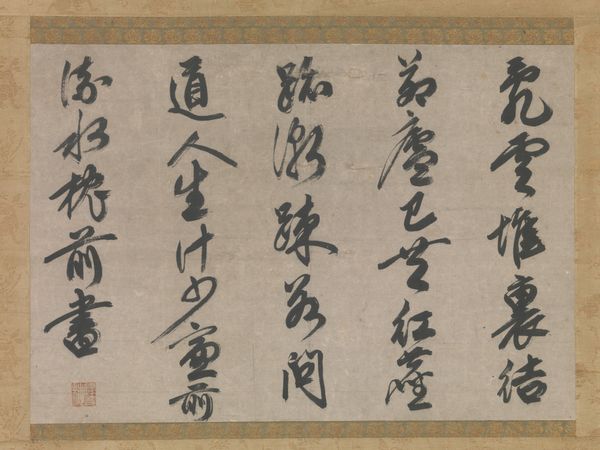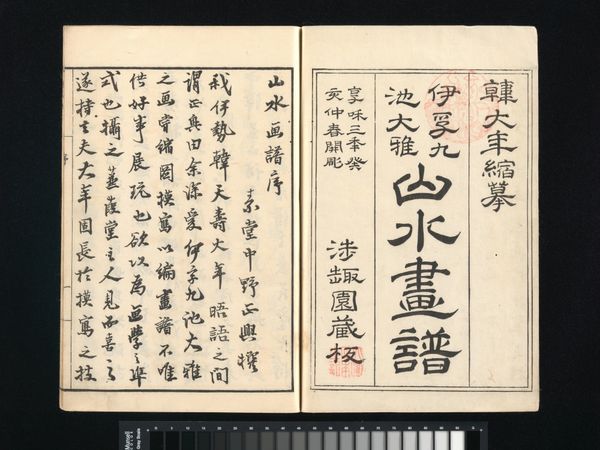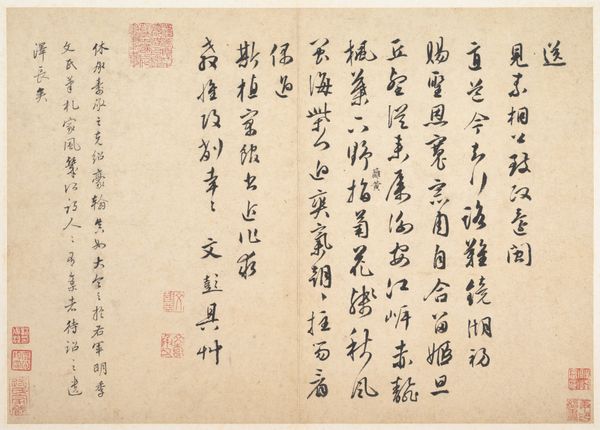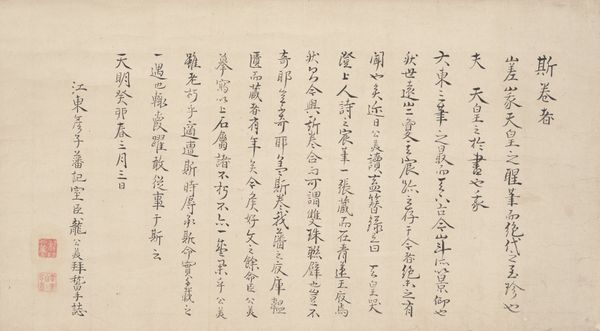
Poem and Colophon to the Album of Paintings, "Clouds and Spring Trees at Dusk" 1867 - 1899
0:00
0:00
drawing, paper, ink
#
drawing
#
asian-art
#
paper
#
ink
#
calligraphy
Dimensions: 9 3/4 x 13 1/2 in. (24.8 x 34.3 cm)
Copyright: Public Domain
Curator: Today we are looking at "Poem and Colophon to the Album of Paintings, Clouds and Spring Trees at Dusk" by Pan Zenggui. The piece which combines drawing and calligraphy on paper, resides at the Metropolitan Museum of Art. It was created sometime between 1867 and 1899. Editor: It feels like a quiet conversation on paper. Like someone capturing a fleeting thought. It's more about the rhythm and movement than deciphering the literal meaning. What's your first take? Curator: My focus is drawn to how Zengui's work intersects with the broader political climate of the late Qing Dynasty. We see an established calligraphic practice used to interpret and reflect on personal sentiment, all while adhering to rigorous social and artistic protocols. It speaks to the constraints and the creative negotiations that artists navigated. Editor: Exactly. The constraint breeds creativity. Look at how the artist's personality comes through! I feel an immense emotional expressiveness in the careful strokes, almost as if one is listening to their heartbeat on paper, wouldn't you agree? It is fascinating how this composition dances between structure and the artist's unrestrained flow. Curator: Indeed. This piece can also be analyzed through the lens of identity. The colophon offers reflections on past events while looking ahead, perhaps signaling personal change. I also think the emphasis on calligraphy elevates the written word above imagery. What could it be suggesting about societal hierarchies? Editor: I love that angle! The album acts as a meeting place for the visual and the textual, kind of a cross-pollination, sparking introspection. As I explore this piece further, my attention continues to go back to this deeply felt sense of longing that seems to resonate, almost pulling one back to a state of meditative reflection, I wonder if it's intentional. Curator: The context and intersection of elements allow for so much interpretation, while the traditional roots offer great depth. It gives us an intimate insight into the culture, class, gender, and time. Editor: Well said! This album page invites viewers to reflect not just on the artist's state, but on our own experiences, feelings and contexts, a testament to the timeless power of art!
Comments
No comments
Be the first to comment and join the conversation on the ultimate creative platform.
